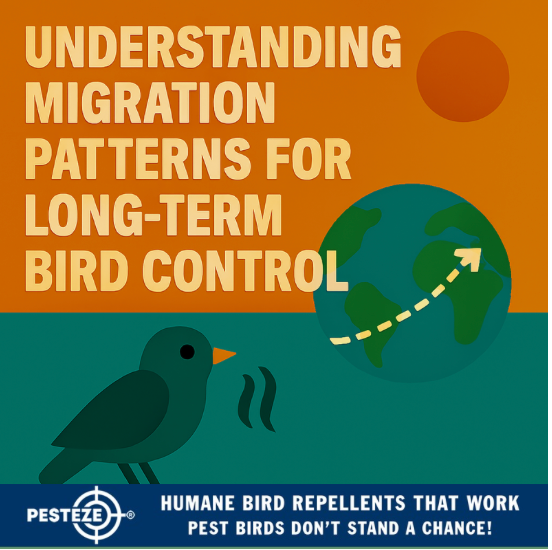UNDERSTANDING MIGRATION PATTERNS FOR LONG-TERM BIRD CONTROL

UNDERSTANDING MIGRATION PATTERNS FOR LONG-TERM BIRD CONTROL
SUMMARY
Bird migration patterns provide critical insights into advanced wildlife management strategies, offering sophisticated approaches to long-term bird control in 2025.
FEATURES
- Scientific Tracking: Comprehensive analysis of bird migration behavioral mechanisms.
- Predictive Management: Advanced strategies for anticipating and managing bird populations.
- Ecological Understanding: Deep insights into bird movement and environmental interactions.
- Technological Innovation: Cutting-edge methods for tracking and managing migratory populations.
- Strategic Prevention: Long-term approaches to wildlife management based on migration science.
GUIDE DESCRIPTION
Migration represents a fundamental biological process that shapes bird population dynamics, creating complex challenges and opportunities for wildlife management. Understanding the intricate mechanisms of bird migration provides critical insights for developing sophisticated, science-based control strategies.
Bird migration patterns are influenced by multiple environmental factors, including climate conditions, food availability, breeding cycles, and global ecological changes. These complex navigation systems involve sophisticated biological mechanisms that guide birds across vast distances with remarkable precision.
Technological innovations in 2025 offer unprecedented capabilities for understanding and managing migratory bird populations. Advanced tracking technologies, satellite monitoring systems, and machine learning algorithms provide detailed insights into bird movement patterns, behavioral mechanisms, and environmental interactions.
Key factors influencing bird migration include:
- Seasonal temperature changes
- Food source availability
- Breeding cycle requirements
- Atmospheric conditions
- Global climate patterns
Comprehensive migration management requires a multifaceted approach that addresses:
- Scientific tracking technologies
- Environmental preservation
- Habitat protection strategies
- Population monitoring systems
- Adaptive management techniques
Climate change introduces significant complexity to bird migration patterns. Shifting environmental conditions alter traditional migration routes, breeding behaviors, and population dynamics, demanding more sophisticated and responsive management approaches.
Professional wildlife management must integrate:
- Advanced tracking technologies
- Ecological research
- Environmental conservation efforts
- Predictive modeling systems
- Adaptive intervention strategies
- Pukhraj Sharma


Comments 0